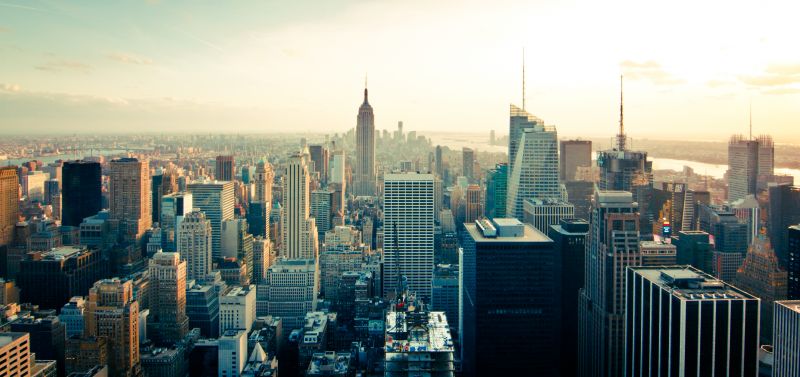A Climate-ready City One Drop at a Time
Published on by Robert Brears, Founder of Our Future Water, Young Water Leaders, Mitidaption & Author (Springer Nature, Wiley) in Technology
Cities consume around 75% of the world’s energy and produce more that 76% of all carbon emissions. While cities are major contributors to climate change they are at the same time highly vulnerable to climatic risks.

In the context of water, cities around the world are at risk of:
- Heatwaves: Prolonged periods of heat will have significant consequences for human health (death and disease)
- Water scarcity: Warmer and drier climates will lead to droughts, impacting water security
- Extreme rainfall: Storms will lead to loss of life and damage to infrastructure
A climate-ready city one drop at a time
To become climate-ready, cities need to manage both demand for scarce water and extreme weather events. Demand management is the better use of existing water supplies before plans are made to further increase supply.
Demand management promotes water conservation and efficiency – in times of both normal conditions and uncertainty – through changes in practices, cultures and people’s attitudes towards water. In addition to balancing demand with supply, demand management enables water utilities to lower energy costs in providing water.
Meanwhile, green infrastructure is the use of natural or semi-natural systems to manage stormwater at its source, keeping it away from the built environment while delivering multiple economic, social and environmental benefits such as reducing damage to property from localized flooding and reducing energy costs, and carbon emissions, of treating wastewater.
Demand management strategies and green infrastructure plans do not necessarily always have to involve large-scale actions such as developing alternative water supplies or constructing wetlands to manage excess runoff.
Instead, it can involve simple actions that enable households to reduce their water consumption and lower the amount of runoff from their properties into the stormwater system. Two examples of which are South West Water’s free water-fixtures program and New York City’s free rain barrel program.
South West Water’s free water-fixtures
The South West of England will face drier summers and an overall reduction in annual rainfall. Combined with higher temperatures which lead to increased evaporation from rivers and reservoirs this will have an impact on the amount of water that can be supplied.
To reduce stress on limited supplies, South West Water has begun offering its customers free water saving kits to enable households to take control of their water usage. With a belief that small changes can cumulatively lead to a big difference, the water utility is giving away kits that contain:
- Hippo 9: Every time a toilet is flushed the Hippo will save 2-3 liters of water. This is for toilets installed before 1991
- Hippo 7: The smaller version is for cisterns installed between 1991 and 2001 and save around 1 liter per flush
- ShowerSave: Sets a constant flow rate of 7.5 liters per minute and saves energy too
- Shower timer: The 4-minute sand timer is a simple tool to help shorten shower times and save water and energy costs
- Spraymagic tap insert: Saves on average 36 liters per day. Fits on most hand basin taps with circular outlets
- Neoperl tap inserts: Saves on average 36 liters. Fits on most hand basin taps with screw fit nozzle outlet
- Top tips leaflet: Includes more water-saving tips for a water-wise home

New York City becoming climate-ready
New York City’s free rain barrels
New York City is projected to experience more precipitation and more variability in precipitation compared to average levels over the past 30 years. This will leave New York City vulnerable to localized flooding and lower water quality from combined sewage overflows. New York City’s Rain Barrel Giveaway Program is part of the city’s Green Infrastructure Plan that aims to capture stormwater before it can enter the sewer system.
In 2016, over 11,000 rain barrels were freely distributed to homeowners. The 60-gallon rain barrels are easy to install and connect directly to a property owner’s downspout to capture and store the stormwater that falls on the roof. Overall, the rain barrels have the capacity to collect over 600,000 gallons of stormwater each time it rains.
The take-out
Small actions at the household-level can have a large-scale effect city-wide.
*Robert C. Brears is the author of Urban Water Security (Wiley), and of the forthcoming titles Blue and Green Cities (Palgrave Macmillan) and The Green Economy and the Water-Energy-Food Nexus (Palgrave Macmillan). He is Founder of Mitidaption, which consults on climate change risks to business, governance and society.
Facebook: UrbanH20
Attached link
http://markandfocus.com/2017/05/24/a-climate-ready-city-one-drop-at-a-time/Media
Taxonomy
- Stormwater Management
- Conservation
- Stormwater
- Service Provision & Demand Management
- Water Management
- Water Storage
- Stormwater Runoff
- Water
- Conservation
- Water Conservation
1 Comment
-
Only the all-round return to nature of organic fumes and the reduction of artificial fumes can save the world.
Among the measures to reduce artificial fumes should be the total total water saving in everyday life by every person, every enterprise of all branches of agriculture and industry. Reconstruction of the entire agriculture with the introduction of non-waste plowing, drip irrigation, other ways to reduce water consumption.